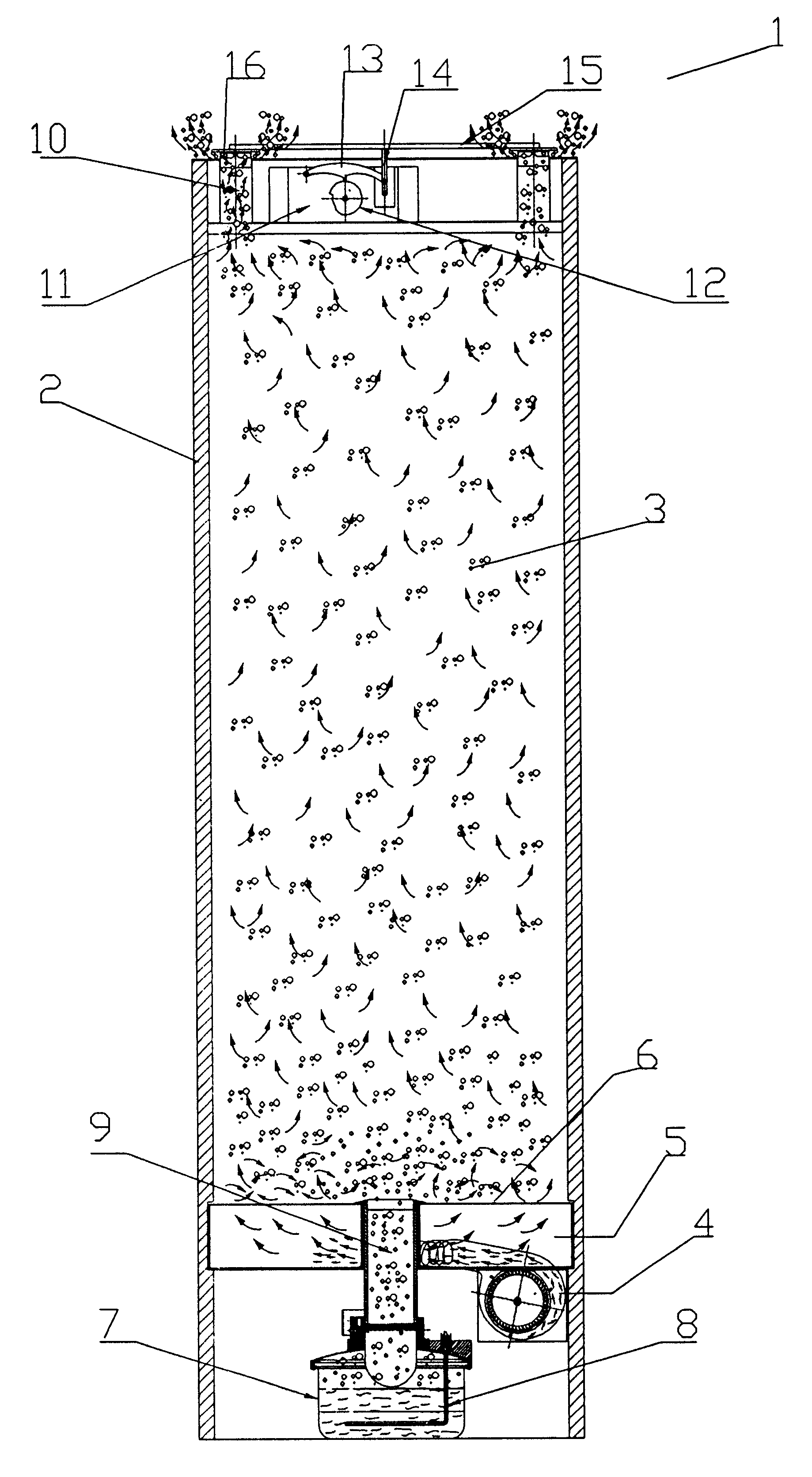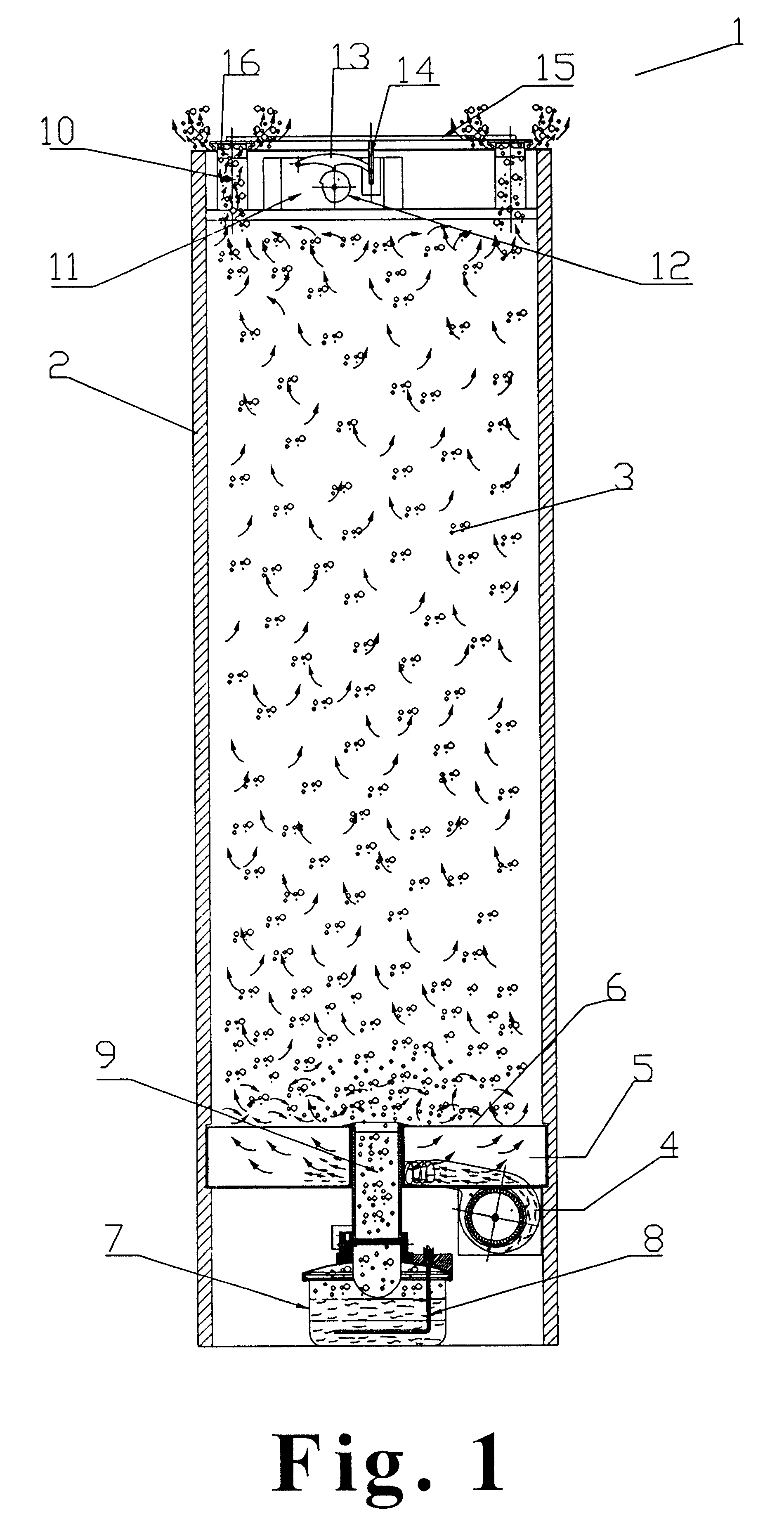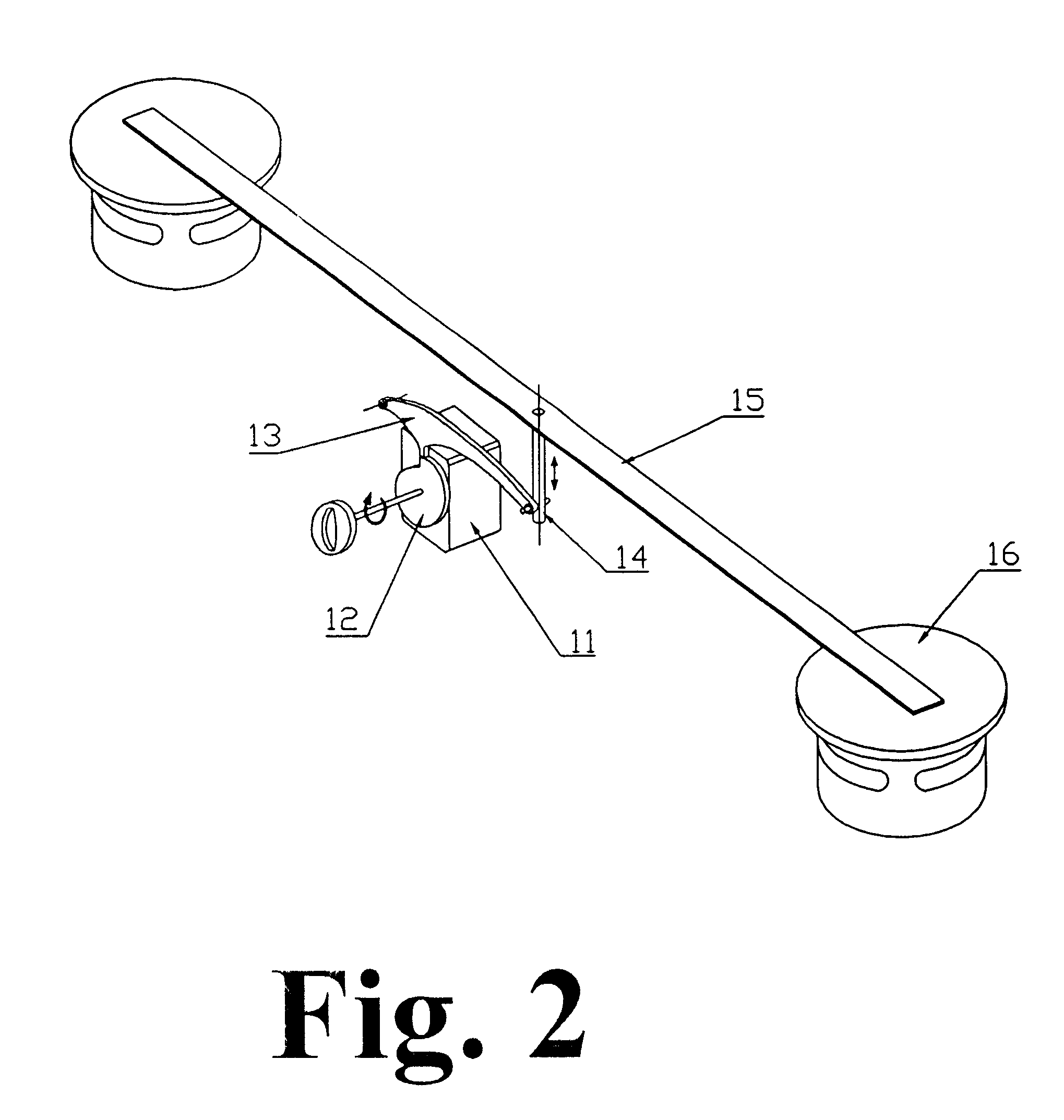Clothes drying and dewrinkling cabinet
a drying cabinet and cloth technology, applied in the field of cloth drying and dewrinkling cabinets, can solve the problems of the size of the interior area, the inability to develop a complete and final solution for the household domestic appliance, and the most disagreeable household chores
- Summary
- Abstract
- Description
- Claims
- Application Information
AI Technical Summary
Benefits of technology
Problems solved by technology
Method used
Image
Examples
Embodiment Construction
An example of an embodiment of the cabinet that is the object of the present invention is that shown in FIG. 1. Cabinet 1 may have one or more airing ducts 10 and the programmer 11 may be sited at different places in the cabinet 1. This programmer may be either electronic or electromechanical.
It may be observed in the example in FIG. 1 that the cabinet has two airing ducts 10 and the programmer 11 is an electromechanical programmer which is situated at the top of the cabinet 1. As shown in the close view in FIG. 2, in this embodiment the cam follower 13, which rests on the cam 12 of the programmer 11, is linked to a vertical shaft 14, which is in turn linked to a horizontal rod 15, attached to the seals 16. In this way, the seals 16 open or close in accordance with the position of the programmer 11. Naturally, if the programmer 11 were electronic, the transmission means would be different.
In reference again to FIG. 1, the steam supply means include a tank 7 with a resistance 8 that ...
PUM
 Login to View More
Login to View More Abstract
Description
Claims
Application Information
 Login to View More
Login to View More - R&D
- Intellectual Property
- Life Sciences
- Materials
- Tech Scout
- Unparalleled Data Quality
- Higher Quality Content
- 60% Fewer Hallucinations
Browse by: Latest US Patents, China's latest patents, Technical Efficacy Thesaurus, Application Domain, Technology Topic, Popular Technical Reports.
© 2025 PatSnap. All rights reserved.Legal|Privacy policy|Modern Slavery Act Transparency Statement|Sitemap|About US| Contact US: help@patsnap.com



